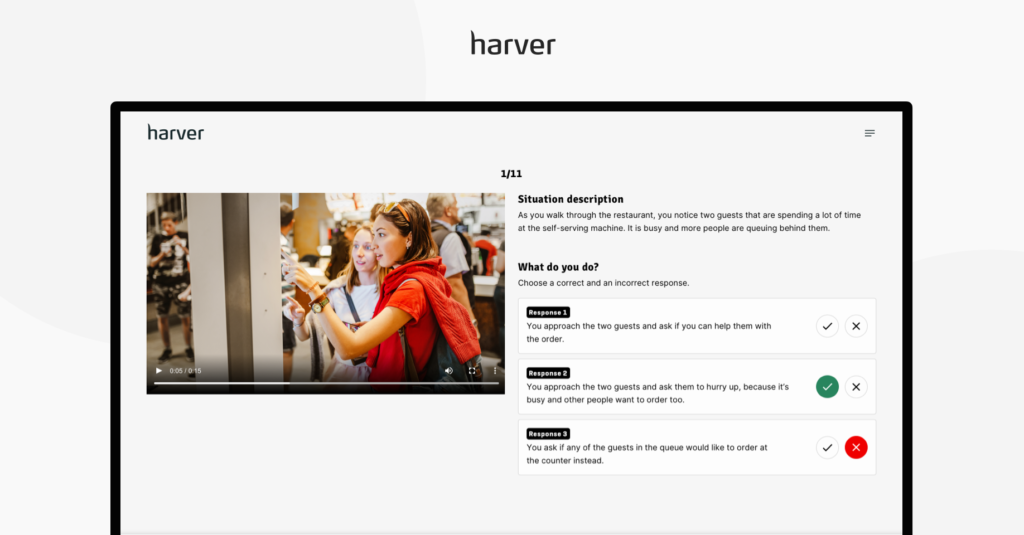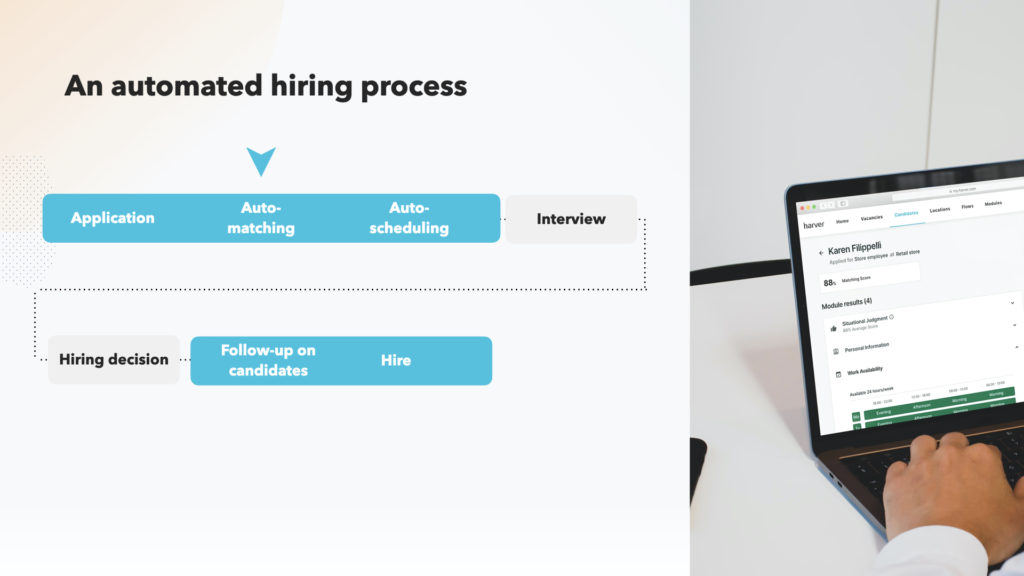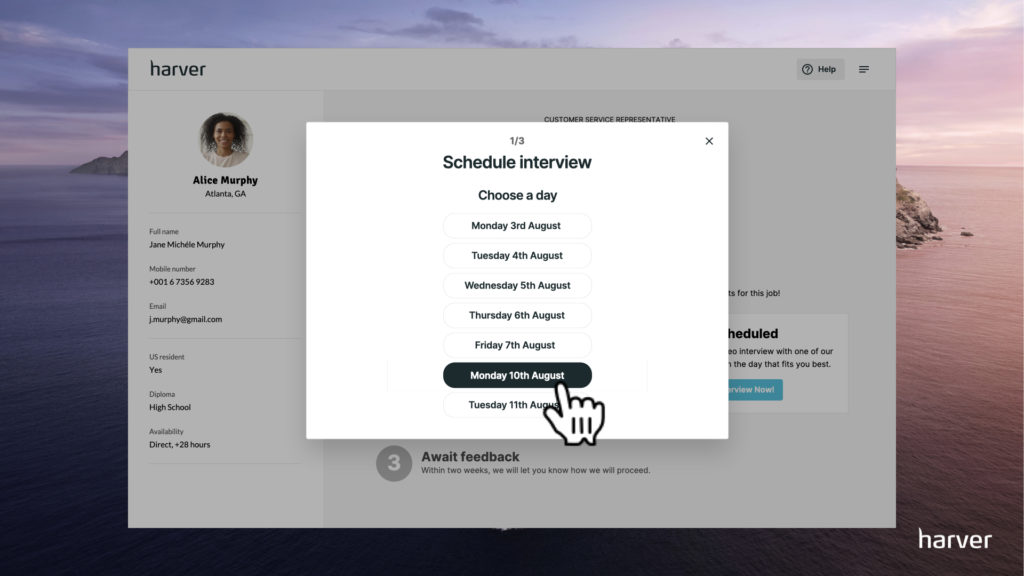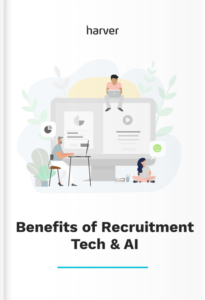Did you know that the best candidates are on the market for only 10 days? And yet, the average time to hire takes almost 24 days.
This is why it is essential to keep candidates engaged throughout the recruitment process. Because the way you treat candidates during the recruitment process will ultimately influence how they will view your company in the future.
What can you do to boost candidate engagement in high volume hiring?
What’s in?
Candidate engagement in high volume hiring
It is quite simple to engage candidates when you have just a few open roles and only several candidates for each one. However, it gets trickier the more candidates you have, particularly for high volume hiring when you can have potentially hundreds of applicants for one or more positions.
Yes, you are going to reject the vast majority of candidates, but you still want to make sure your recruitment process is as engaging and pleasant for the candidates as possible, because disturbingly, according to Ideal.com, almost 60% of job seekers have been badly treated during a recruitment process.
And why should this fact matter? Because a survey by CareerBuilder revealed that 22% of job seekers said that if they have a poor experience during the recruitment process for a company, they will tell other candidates not to apply to that company. And the last thing you want is for disgruntled candidates to bad mouth you to potential new recruits.
The most common candidate engagement issues include:
- Long application process
- Lack of communication
- Extended hiring time
- One way communication – candidates are unable to contact the recruiter
- Not being told if they are unsuccessful

60%
of candidates experienced employers never bothering to let them know the decision after the interview.
Source: Careerbuilder
So, to avoid putting anyone’s nose out of joint and ensuring the recruitment process remains as sweet as possible even during high volume hiring, here are 8 nifty ways to boost candidate engagement even during times of high volume hiring.
1. Get candidates excited about working for you
Before candidates even get to the application stage, get them excited about your company. The easiest way to build candidate engagement from the start is via your social media platforms, or on your recruitment page.
Show potential candidates what your company is like in company videos. Give candidates something to get captivated with.
For example, here’s the candidate experience we built for Valvoline. The applicants get to see what the job is about, what the work environment looks like, and the overall experience is engaging, fun, and short.
Some general tips:
- Have them complete online personality assessments to assess for culture fit prior to applying.
- Post videos of current employees on your social media channels.
- Use VR to show people around your office.
- Throw a mixer where interested applicants can meet the personalities they are likely to be working alongside.
And definitely manage candidates’ job expectations by either giving them a realistic job preview by allowing them to shadow your existing employees or by making a ‘day in the life of’ video that you can share online.
The more candidates are prepared for what lies ahead, the more likely they are to either get excited and stick around, or get turned off and remove themselves from the recruitment process.

90%
of candidates will conduct online research about the company before applying for a job.
Source: HR Daily
2. Send confirmation emails
This should be an obvious one to boost candidate engagement. 96% of job applicants want confirmation their application has been received. However, only 8% say they always get this. So leverage the latest technology and automate your communication with candidates through your ATS or your candidate assessment platform.
Keeping in touch at the beginning of the process isn’t tricky, in fact, it’s one of the easiest wins you can make. Simply set up an automatic email reply every time an application is received.
Include in your reply a ‘thank you’ for taking the time to fill out the application, let candidates know when the closing date for applications is, and how long after that date they can expect to have to wait before they hear whether they have been successful in progressing to the next stage or not.
The key here is ‘or not’. You don’t have to provide feedback to unsuccessful candidates during the first round sift, just make sure you tell any unsuccessful candidates that they haven’t progressed and thank them again for taking the time to apply. This reply can be automated too.

Zappos created an online application experience leading to
97%
candidate satisfaction score.
Source: Harver
Note – if you’re going to keep unsuccessful candidates’ details on file for potential future openings, let them know in an automated email reply and encourage them to stay in touch with you via social media.
Use unsuccessful candidates to keep your candidate pipeline filled up with potential applicants for future positions. Just because they weren’t successful for this position doesn’t mean something better won’t suit them further down the line.
Like what you see?
Don’t miss out. Subscribe to our quarterly digest to get the latest TA and TM resources delivered right to your inbox.
3. Provide a hiring timeline and stick to it
After you have received applications when high volume hiring, whittle them down quickly using candidate assessment technology to assist you. Maintain candidate engagement by letting the successful candidates know they have moved through to the next stage.
Always let candidates know what steps your recruitment process includes, because not all companies recruit in the same way, and you don’t want to spring any unexpected surprises on candidates and put them off working for you.
Again this can be automated as you are sending out the same information to every candidate. Tell them what to expect at each subsequent stage – assessments, interview stages, hiring decision – but most importantly, let candidates know when to expect these to happen.
You don’t have to give exact dates at this stage, but at least give a range, a time frame, a week, two weeks, longer. And also inform candidates if any unexpected delays occur, don’t leave candidates in the dark for extended periods of time; they’ll get nervous that they’ve been rejected and you risk losing their interest in your company.
An alternative is to use a platform like Harver that allows candidates to self-schedule interviews with your recruitment team if they fit your selection criteria. Here’s what this step looks like in the candidate journey.
4. Consider using a chatbot
Your candidates will have a lot of questions of you – about the role itself, about the application process or the timeline between applying and hiring. If you have hundreds of applicants, you won’t be able to answer all of the questions personally.
Boost candidate engagement by employing a chatbot to answer some of the most common questions immediately, preventing candidates from losing touch with you.
And before you wonder if candidates would be happy accepting answers from a chatbot, Allegis data revealed that two-thirds of candidates are happy interacting with them, because like Alexa or Siri, they mimic our natural conversational styles.
So figure out what the most common questions will be and craft answers that the chatbot can supply. Just ensure you have a process in place if the candidate’s question wasn’t answered satisfactorily – that the question then gets routed to a human who can answer it.
How AI & recruitment technology is changing recruiting experience
Find out how tech has helped other companies grow by enhancing both the recruiters’ and candidates’ experience!
5. Create an engaging pre-selection process
In high volume hiring, it is often nearly impossible to manually screen all the candidates, not to mention that if you attempt to do so, you risk overlooking qualified candidates.
You need to find a way to select candidates for the next round quickly and without much intervention from your side. However, you still want to keep the process engaging.
How to do so?
You can create an online assessment experience unique to your company that will help the candidates to learn more about your organization and, at the same time, provide you with valuable data about the candidates.

Include various elements in your assessment journey. These can be, for example:
- personality questionnaires
- gamified assessments
- company videos
- situational judgment tests
- open-ended questions
Combining assessments with videos in an engaging way will improve the candidate experience and based on the results of the assessments, you will be able to narrow down your applicant list quickly and fairly.
Below you can see our full library of pre-employment assessments, specifically designed for volume hiring.
6. Provide feedback
If you have a large number of candidates because of high volume hiring, it might be hard to provide personalized feedback to everyone. There are some recruitment technology solutions that will allow you to screen and grade candidates and rank them for you, they can even provide you with information on how the ranking was achieved.
However, some assessment vendors go a step further and allow you to choose to share assessment results with your candidates after they finish the application. By providing feedback to unsuccessful candidates, they can learn where their strengths and weaknesses lie which will help them in their future careers.
If you can, provide candidates who have made it further in the process with feedback on the same day they are interviewed.
Research carried out by The Talent Board shows that candidates are 52% more likely to put more effort into ensuring they have a relationship with a company – refer friends, reapply for other positions, purchase from the company, etc. – if they receive feedback on the same day they are interviewed.
Compare this to the number of candidates, just 41%, who said they would stay in touch with the company if they were only provided with recruitment process-based feedback, e.g. next steps.
It really does work to your advantage to make the effort to provide timely feedback. But remember, if you’re going to go down this route, you need to employ technology to ensure you meet your goals.

Candidates are
4x
more likely to consider a company for a future opportunity when they receive constructive feedback.
Source: LinkedIn
You will need to utilize interviewing software that will allow you to automate the recruitment process, carry out live interviews and analyze the feedback, plus enable collaboration with all hiring stakeholders.
And you should definitely consider providing same-day feedback as:
- Positions will be filled faster,
- And the alarming trend of ‘ghosting’ by candidates towards companies who have not provided them a great candidate experience will dramatically be reduced.
Of course, you don’t have to provide personalised feedback in the early stages. For example, after the initial CV sift, just a simple yes or no will suffice, but the more you engage with candidates and the further down the recruitment process you get, the more it is expected of you to provide candidates with bespoke feedback.
7. Automate interview scheduling
It takes time to schedule interviews, especially if multiple stakeholders (hiring managers, recruiters, peers) are involved. Luckily there are tools, such as Harver, which allow you to automate interview scheduling based on availability.
What our platform does is automate most of the steps in the volume hiring process, so that the hiring managers or recruiters can focus on the most important ones – the face-to-face interview and the hiring decision.

As we’ve shown above, the interview scheduling step can be automated. In the backend of the platform, your recruitment team can set their availability, and this can be aligned and synchronized even for multi-location organizations such as retail chains.
In the frontend – meaning in the job application flow, the candidates who fit the requirements of the role are moved automatically to the next stage of the process, where they’re prompted to choose a day and time for the interview.

If you’d like to see what this feature looks like in practice and how it helps other organizations dealing with volume hiring, you can book a demo below.
If you’d like to see how Haver can transform your hiring process,
book a demo here!
8. Ask for feedback
Show that you value your candidates’ opinions during your recruitment process even during high volume hiring.
Don’t just provide them with feedback afterward, ask them to provide you with feedback. Let them help shape your future recruitment strategy, because many of them are the next generation of job hunters, and what they’re looking for might not necessarily be what you’re currently offering.
Create a short survey and ask what their thoughts are. Not only will you engage them but you will also gain valuable data on your recruitment process and will be able to optimize it.
Here’s what this feature looks like in the Harver platform. Of course, the questions can be customized if you prefer to ask candidates something different.

Next steps
Improving candidate engagement during periods of high volume hiring is challenging. However, you can automate many tasks and still keep the candidates engaged.
Don’t treat the candidates as numbers but instead, try to create a positive experience for them through automated communication, videos, and feedback. That way you’re making sure that they will stay interested in your company and maybe apply again in the future if unsuccessful this time around.
If you’d like some inspiration, check out the experience we’ve built for Albert Heijn, a big retail client in the Netherlands, and the results they’ve achieved after transforming their recruitment process with Harver.
Ready to transform your hiring process?








